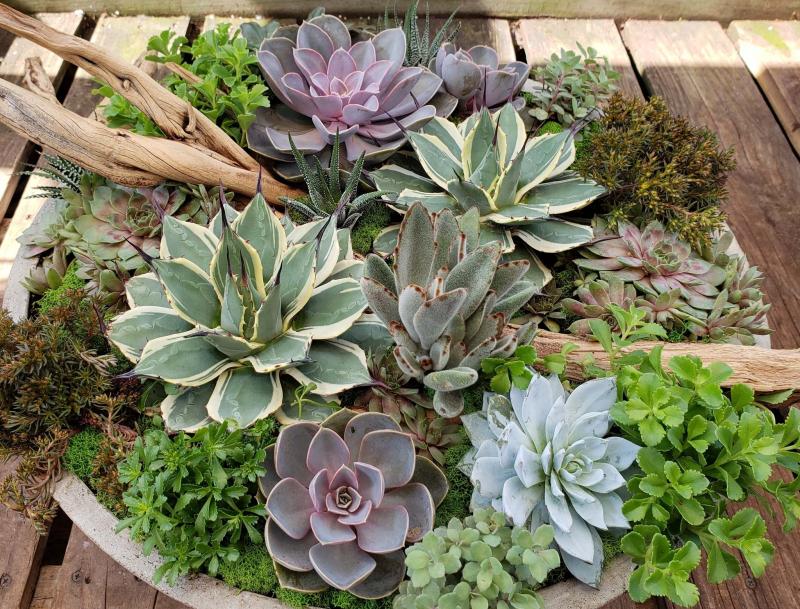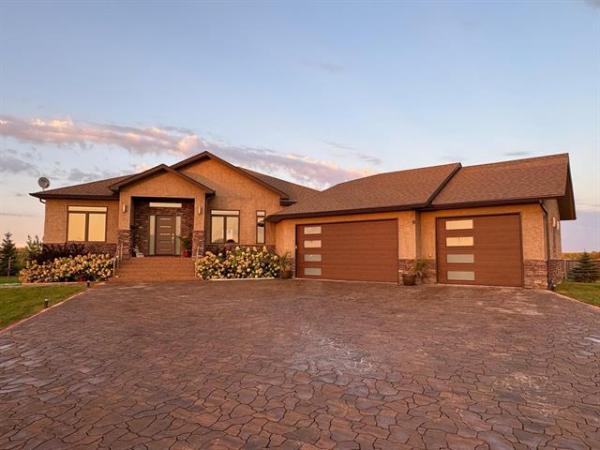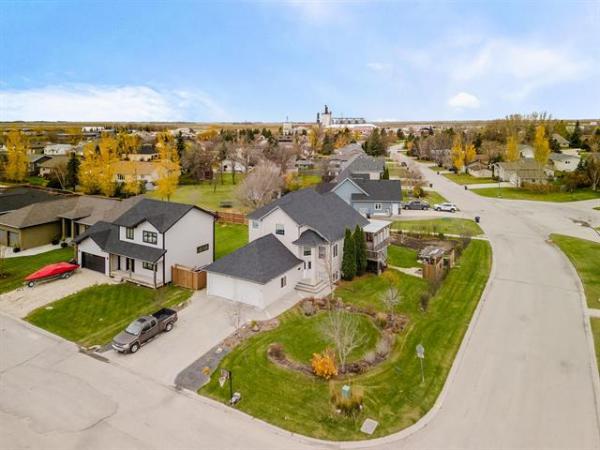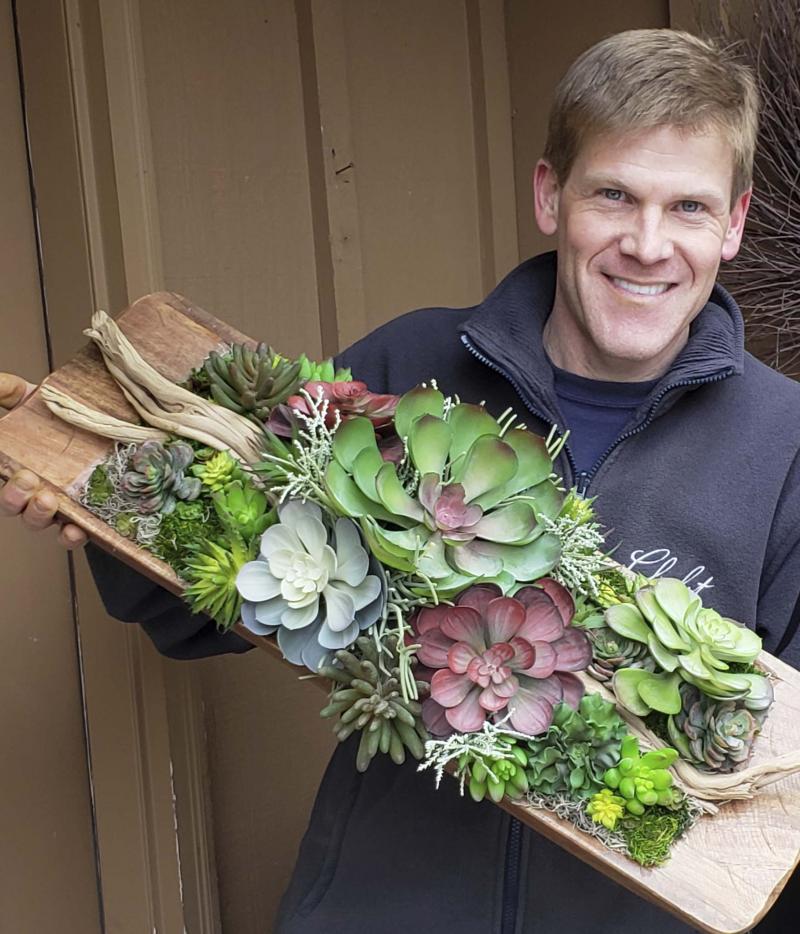
Supplied
Indoors, sometimes faux is the way to go, says Earl Lieske III, a connoisseur of container gardening.
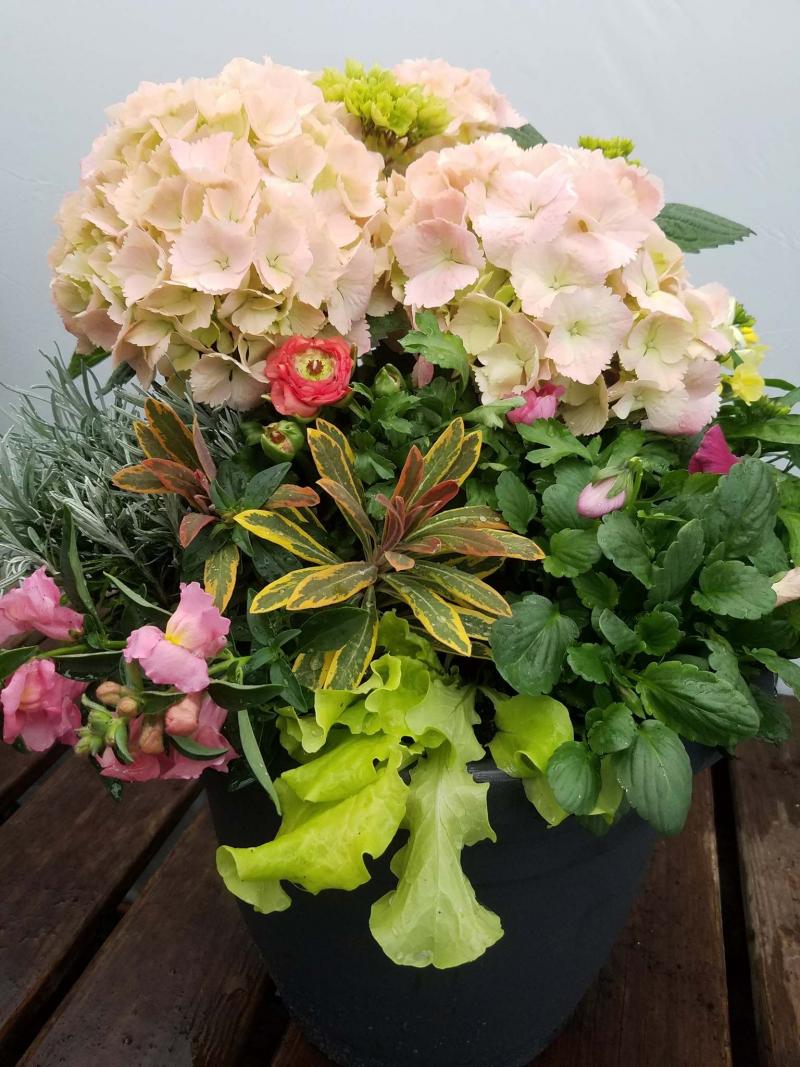
This delicious spring container design features hydrangea with the unexpected addition of lettuce.
Submitted photos by Earl Lieske III
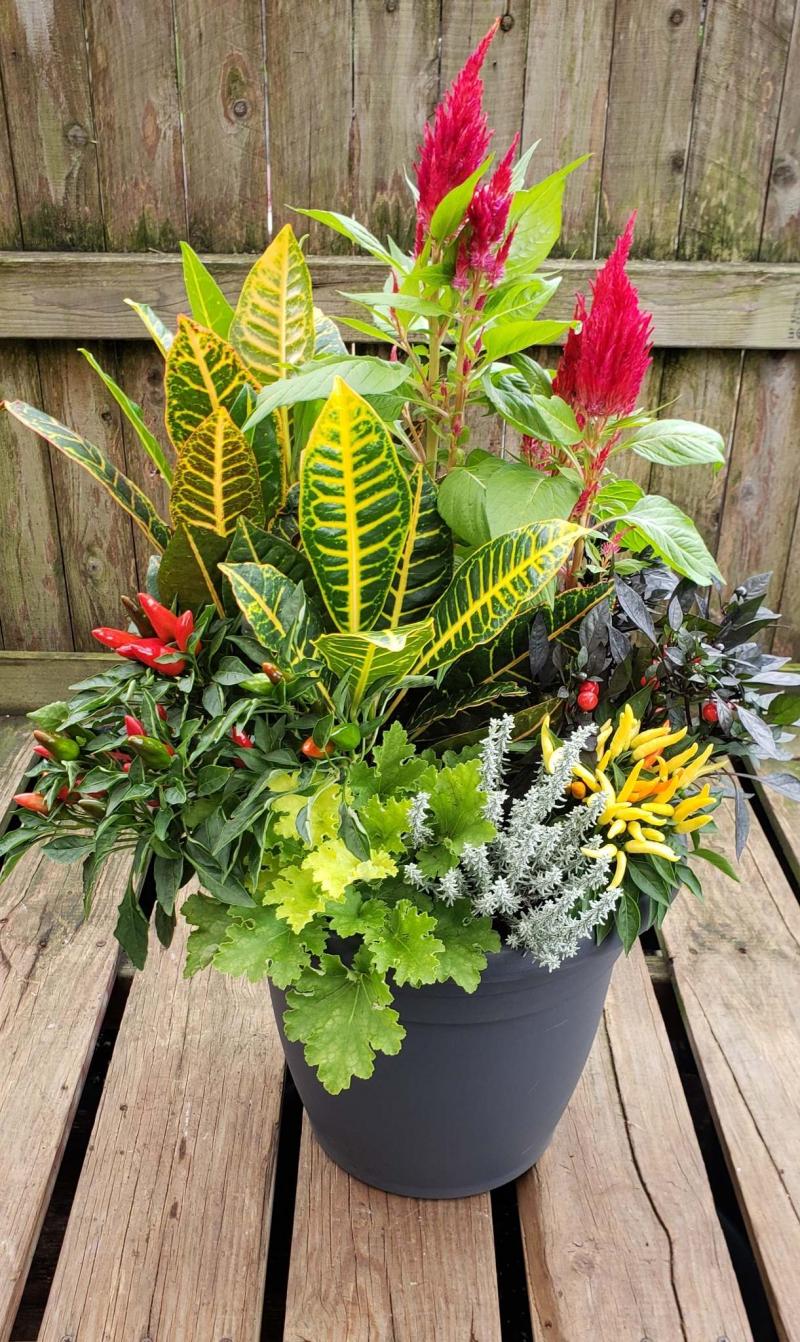
This sizzling design combines peppers and curry with Croton Petra and Heuchera Lime Ruffles.
Earl Lieske III
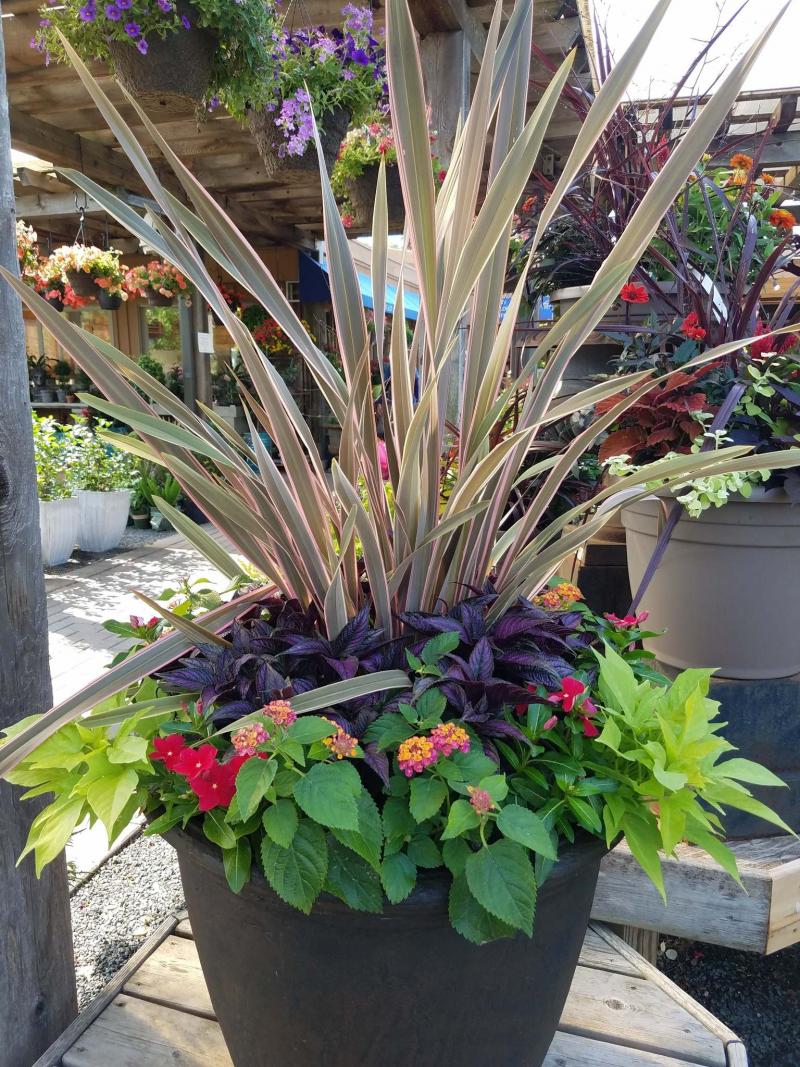
Fragrant herbs are placed in front of a Rosemary topiary in this herb pot.
Earl Lieske III
Earl Lieske III has a great eye for container design. A professional horticulturist, Lieske is the custom planter design lead at Chalet Nursery, a third-generation, family-owned business that was named Innovator of the Year by Garden Center Magazine. Chalet is celebrating its 101st year in business in the North Shore area of Chicago.
Lieske has a master’s in ornamental horticulture and plant and soil science and is a certified craftsman gardener by the National Trust of Scotland. As a container gardening enthusiast, I am inspired by his designs and enjoy corresponding with him to learn more about how he creates his visual compositions.
I confess, however, that I may have come across as more cheeky than sympathetic when it was reported in late January that a polar vortex was about to grip Chicago with the most extreme cold in a generation. Do Winnipeggers experience a twinge of glee when another city gets hit with a wintry blast? Yes, I think so.
The thing is, Chicago and Winnipeg have a lot in common when it comes to extreme weather. Lieske says that in the past few years, Chicago has had inadequate snow cover despite periods of extreme cold which leaves shrubs and perennials unprotected. In summer, hot and humid temperatures present another set of challenges for the landscape.
Container gardening offers many benefits and solutions, Lieske says, and in particular, a unique opportunity for true creativity that comes from within. Lieske places a high value on authenticity. Living in a social media world, it has never been easier to draw on the creativity of others. It’s OK to look, Lieske says, but draw on your imagination and vision to create your own unique design.
Lieske begins by studying the vessel itself. "Sometimes this will stimulate an emotion or vibe as to what style one should choose," Lieske says. It might be a style that is clean and sleek, simple and modern, high colour, all foliage or all blooming design, a monotone combination, or working with just a single specimen, he says.
Once Lieske decides on a style, he first builds the container design in his mind. "I select the backbone of the design, which is one structural plant or a plant that will serve as the background," Lieske says. "As I build the design using harmonious plant material, each plant that is added starts to dictate the next plant that is selected until my design is completed. Then I walk away, return and decide if it is what I envisioned."
A vision may be lost when clashing colours diminish or overwhelm other plants, Lieske says, or when textures are too similar, preventing any one plant from standing out or accentuating one another. Selecting plants that have similar cultural requirements is a vital part of successful container design.
One of the first things you will notice about Lieske’s container designs (check out his Instagram page @earllieske) is that some are perfectly symmetrical (classic triangle design) and others are intriguingly asymmetrical. While he likes both arrangements, Lieske believes that you can build a better looking and more dynamic container design that has greater depth and interest by arranging the tallest plant not in the centre of the pot, but at the back.
Most containers are placed in front of a door or wall, Lieske says. When building a set of containers that will flank a door or garage, Lieske says it is important to build in opposites; that is, build the first pot and then duplicate the same plants in the second container but reverse their direction (create a mirror image).
"Make your container design something that is incredibly beautiful and adds artistic visibility to your home," Lieske says. "It is art, it is living sculpture — make it glorious."
Lieske coaxes his clients off the ledge by setting up a container and placing a selection of plants on the ground so that clients can start to visualize how a finished design might look. He recommends taking some pictures. Determining your style and colour preference will help you to build the container design you want. Once you are ready, go outside for a couple of hours, have a glass of wine and enjoy putting your container together, Lieske says.
Foliage plants add texture to container designs but in spring, Lieske says, everyone is hungry for colour and spring flowers. In one spring recipe, Lieske has combined a macrophylla (big leaf) variety of hydrangea with ranunculus, pansy, Ascot Rainbow Spurge euphorbia and snapdragons. He likes to include varieties of lettuce and mesclun in chartreuse, bright vivid green, bronze or red in his spring designs.
"Lettuce is phenomenal in containers and a little unexpected," Lieske says. Buttercrunch lettuce, in particular, adds vibrancy and a delicious pop of colour. It’s also dual purpose, Lieske says. When it’s time to switch your cool season design to a hot season design, you can enjoy the lettuce in your salad.
Containers are not meant to be permanent, Lieske says. Why not create seasonal container designs for spring, summer, fall and winter? If a particular plant such as pansy is best suited to a cool season container, Lieske suggests keeping it in its plastic pot so that it can be lifted out easily and another plant inserted.
Lieske says that while succulents continue to be very popular for summer containers, they are even more popular as houseplants or windowsill plants. He will include some rosette-shaped echeveria in mixed outdoor container designs because they are more tolerant of moisture than other succulents, but keeps them in their 15-centimetre pots so they don’t receive too much moisture.
For a hot and sunny location, Lieske suggests a sizzling design that combines red celosia and Croton Petra with curry plant (Helichrysum italicum), Chilly Chili pepper, Mambo Red pepper, Black Pearl pepper and Heuchera Lime Ruffles.
One of my favourite designs by Lieske is an herb pot that combines beautiful, fragrant texture. Lieske built the design by placing a rosemary topiary at the centre back of the pot. On one side, he planted lemon basil and, on the other, orange marigold. Fillers include curry and lemon thyme. At the front of the pot, he added variegated marjoram and prostrate rosemary.
An uncomplicated summer design that would cross over well into fall includes New Zealand flax (Phormium) Pink Stripe as the central thriller with a ring of Persian Shield at its base. Vinca Cora Red and Lantana Bandana Cherry Sunrise provide vibrant colour and Marguerite sweet potato vine serves as the trailer. Other varieties of vinca and lantana can easily be substituted.
Lieske says faux plants for indoor arrangements are enjoying a renaissance lately. The quality of faux stems, branches, flowers, greenery and succulents has become remarkably lifelike in appearance and feel, he says, and some of his clients are choosing faux for key areas of their living spaces, including areas with little natural light or high visibility.
Recently, Lieske constructed an indoor arrangement with assorted faux succulents, which he combined in a rustic dough bowl together with sandblasted grapevine or ghostwood (driftwood) and Spanish and preserved forest moss.
"Everyone, including me, prefers living plants," Lieske says, "but sometimes faux is the answer."
colleenizacharias@gmail.com

